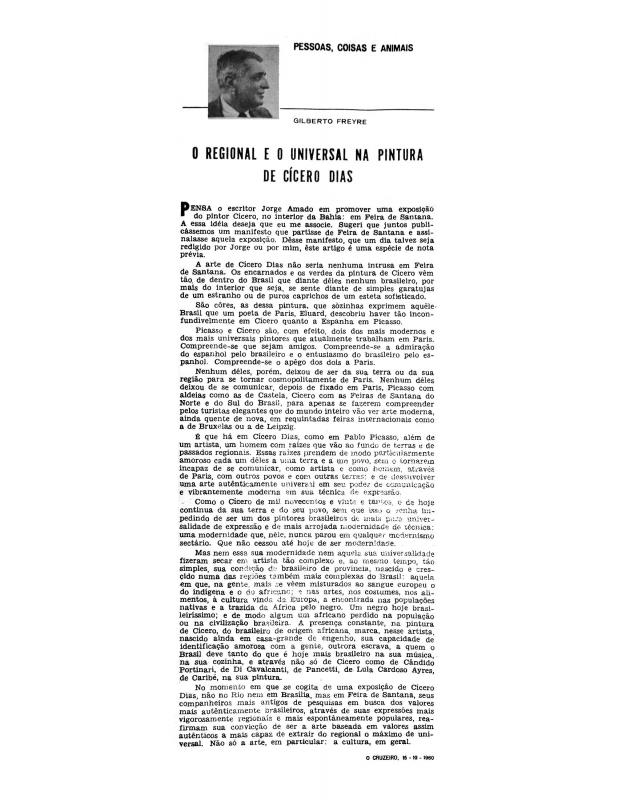The sociologist, anthropologist, historian, writer, and journalist Gilberto [de Mello] Freyre (1900–87) presented this review at the I Congresso Afro-Brasileiro (Recife, 1934). Eight years earlier, Freyre had organized the Primeiro Congresso Regionalista do Nordeste—see manifesto in [doc. no. 1074787]—where he championed certain aspects of the culture and customs of his native region (in northeastern Brazil), and condemned the “cosmopolitan evil” and “false modernism” being promoted by the foreign novelties that so entranced the power centers of the country: São Paulo and Rio de Janeiro. In this case, the undeniable existence of a white hegemony in Brazil prompted Freyre to highlight the importance of the black population and culture as an integral facet of the Brazilian character. The impact of this African-Brazilian conference was undoubtedly on a par with the Semana de Arte Moderna held in São Paulo in 1922, in terms of its consolidating effect on the modernist movement in Pernambuco.
Freyre organized the I Congresso Afro-Brasileiro in his native city in 1934, a year after the publication of his important sociological book that examined the colonial mindset of Brazil: Casa Grande Senzala: formação da família brasileira sob o regime de economia patriarcal (1933), the first edition of which was illustrated by his intellectual friend, the artist Cícero Dias, who also designed and illustrated the poster for the 1934 conference.
Freyre sought to illustrate the ideas proposed in his “Regionalist Manifesto” (1926) with works by his compatriot, Cícero Dias (1907–2003), who was also from Pernambuco, and who some years later, left Brazil and settled in France. Freyre establishes the connection with “O regional e o universal na pintura de Cícero Dias” in [doc. no. 1075269].
There was a “2º Congresso Afro-Brasileiro” (Salvador, Bahia, 1937). For additional information, see the document by the same name by Edison Carneiro and Aydano do Conto Ferraz among the works that were presented during the event (Rio de Janeiro: Civilização Brasileira, 1940).


